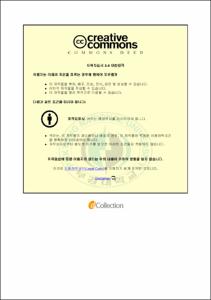RuO2/Ti, PtO2/Ti, IrO2/Ti 및 흑연전극을 이용한 염료폐수의 전기화학적 처리
- Abstract
- Textile industry is considered as one of the most polluting sectors in terms of effluent composition and volume of discharge. Effluents from textile industry are not only colored but also contain high amounts of organic compounds and dissolved solids. Especially, the azo dyes form the largest polluting group among the synthetic pigments. The electrochemical method treats colors and organic matters by oxidation/reduction of electrode surface. The electrochemical processes are compact and simple, and the rate of pollutants removal is very rapid compared with the other wastewater treatment processes.
The removal of dye wastewater containing CI Direct blue 15 was studied by electrochemical treatment process. To find the optimum material of electrode, various materials of electrode (anode and cathode) were tested at different conditions of electrolyte concentration, current density, reaction temperature and initial pH. The cathodes were graphite and stainless-steel plate. The anodes used in the study were RuO2/Ti, PtO2/Ti, IrO2/Ti and graphite plate. De-colorization and degradation of the dye was confirmed by using UV-Vis spectroscopy and TOC measurements.
As a result, the removal efficiency of dye was not affected by the material of cathode. As the electrolyte concentration and the current density increased, the removal efficiency of dye was increased. The effect of reaction temperature was various on the kind of anode materials. The performance order of removal efficiency of anodes was RuO2/Ti > PtO2/Ti > IrO2/Ti > graphite in the case of acid condition. Also, RuO2/Ti > IrO2/Ti > PtO2/Ti > graphite in the case of neutral and basic condition. The removal efficiency of organic matter of the end of experiment was not affected by the material of anode. In the above experimental conditions, RuO2/Ti and IrO2/Ti electrode were the best anodic material of electrochemical treatment process of dye wastewater.
- Issued Date
- 2010
- Awarded Date
- 2010. 2
- Type
- Dissertation
- Publisher
- 부경대학교
- Affiliation
- 부경대학교 대학원
- Department
- 대학원 화학공학과
- Advisor
- 임준혁
- Table Of Contents
- List of Tables ⅲ
List of Figures ⅳ
Abstract ⅵ
제 1 장 서론 1
제 2 장 문헌연구 4
2.1 염색폐수 전기분해의 연구동향 4
2.2 이론적 배경 8
2.2.1 염색폐수의 특성 8
2.2.2 전기화학적 처리방법 17
제 3 장 실험장치 및 방법 21
3.1 염료폐수의 제조 21
3.2 실험장치 23
3.3 실험조건 및 방법 25
3.3.1 음극재질에 따른 염료 제거 실험 27
3.3.2 양극재질에 따른 염료 제거 실험 27
3.4 분석방법 29
제 4 장 결과 및 고찰 30
4.1 음극재질의 선택 30
4.2 양극재질에 따른 염료 제거 특성 35
4.2.1 전해질 농도의 영향 35
4.2.2 전류밀도의 영향 41
4.2.3 반응 온도의 영향 47
4.2.4 초기 pH의 영향 54
4.2.5 유기물 제거 효율 60
제 5 장 결론 62
참고문헌 63
- Degree
- Master
- Files in This Item:
-
-
Download
 Ti 및 흑연전극을 이용한 염료폐수의 전기화학적 처리.pdf
기타 데이터 / 1.3 MB / Adobe PDF
Ti 및 흑연전극을 이용한 염료폐수의 전기화학적 처리.pdf
기타 데이터 / 1.3 MB / Adobe PDF
-
Items in Repository are protected by copyright, with all rights reserved, unless otherwise indicated.